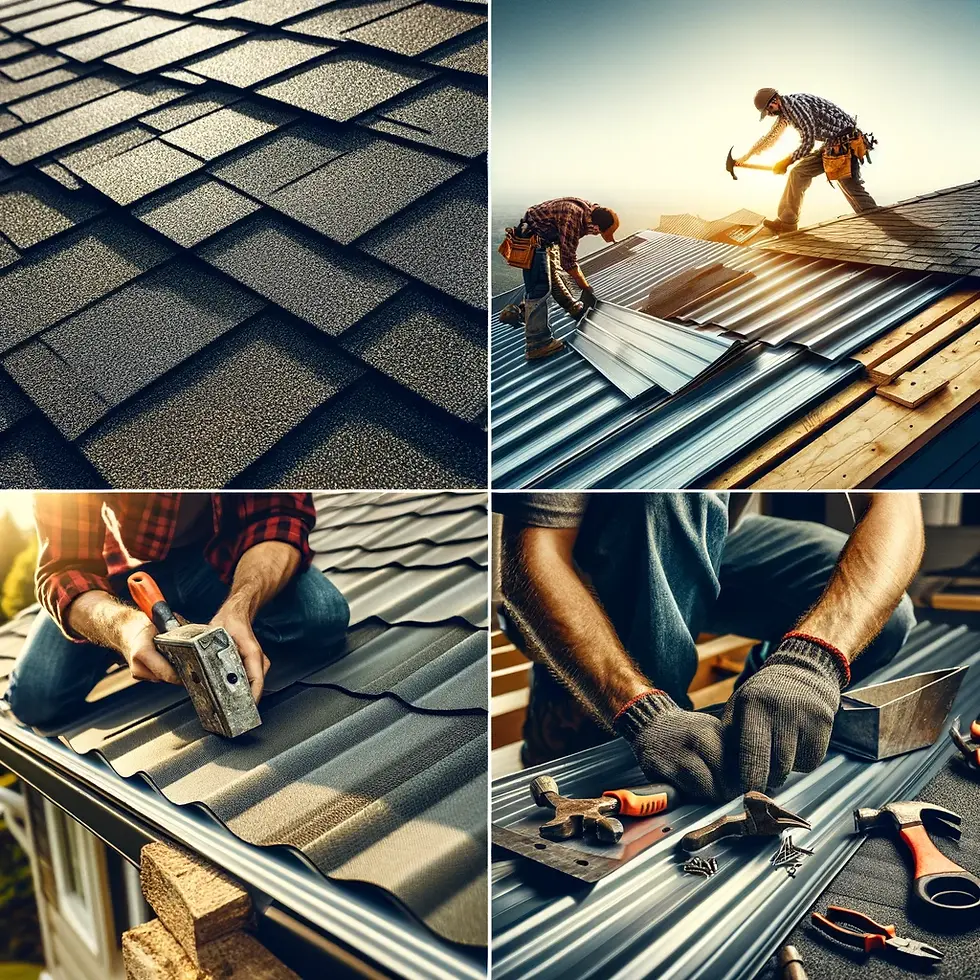The Evolution of Roofing Materials: A Journey Through Time and Innovation
- Tom (owner)
- Jan 14, 2024
- 2 min read

Roofing, an essential component of any building, has undergone significant transformations over the years. From ancient times to the modern era, the evolution of roofing materials reflects a journey of innovation, adapting to various climates, aesthetic preferences, and technological advancements. In this blog post, we'll explore this fascinating evolution, highlighting how these changes have shaped the roofing industry, particularly in regions like Montgomery, Frederick, and Howard County in Maryland.
**Ancient Beginnings and Natural Materials**
The story of roofing begins with natural materials. Our ancestors used what was readily available – leaves, straw, and wood. In ancient Mesopotamia and Egypt, clay tiles became popular, signifying the first significant step towards durable roofing. These materials provided basic protection against the elements but were limited in longevity and resistance to harsh weather.
**The Middle Ages to the Industrial Revolution: Innovation in Europe**
As we moved into the Middle Ages, Europe saw the introduction of thatched roofs, which were waterproof and could last for decades. However, the risk of fire was a significant drawback. The industrial revolution brought about a significant change with the introduction of metal roofing, particularly lead, copper, and zinc. These materials offered durability and were a staple in industrial buildings and train stations.
**The 20th Century: Asbestos, Asphalt Shingles, and Beyond**
The early 20th century introduced asbestos for its fire-resistant properties. However, its health risks later led to its decline. The real game-changer was the introduction of asphalt shingles in the early 1900s. Affordable, easy to install, and available in various colors, asphalt shingles revolutionized residential roofing, a trend still dominant in areas like Maryland.
**Modern Advances: Sustainability and Technology**
Today, the roofing industry is not just about covering buildings. It's about sustainability, energy efficiency, and integrating technology. Modern materials like solar tiles, green roofing, and advanced composites reflect these priorities. In Maryland, where energy efficiency and environmental friendliness are increasingly valued, these materials are becoming more popular.
**The Future of Roofing: Smart and Eco-Friendly Trends**
Looking ahead, the future of roofing is exciting. We anticipate more smart roofing solutions equipped with sensors to monitor weather conditions and structural health. Eco-friendly materials that reduce carbon footprints and innovative designs that complement modern architectural trends are on the horizon.
**Conclusion: A Roof Over Our Heads, A Story of Progress**
The evolution of roofing materials is a testament to human ingenuity and adaptability. At Apex Roofing and Construction, we honor this rich history by offering a range of roofing options suitable for every need and era, especially for our customers in Montgomery, Frederick, and Howard County. Whether you prefer traditional materials or are leaning towards modern, eco-friendly options, understanding this evolution helps make informed decisions for your roofing needs.
.png)



Comments